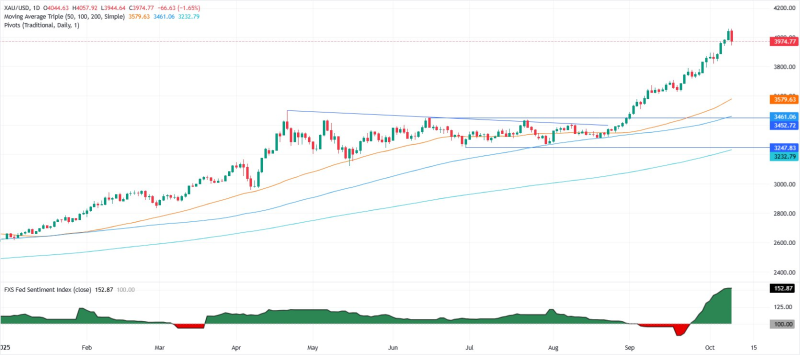After weeks of steady gains, gold's rally hit a wall on Thursday. Prices spiked to an all-time high of $4,058 before reversing course and closing below the $4,000 mark. The pullback came as traders locked in profits, the dollar found its footing, and hopes for an Israel–Hamas ceasefire eased some of the geopolitical tension that had been fueling the rally.
What the Chart Shows
Economist EMILY WEEKS pointed out that the retreat reflects both technical resistance around $4,050 and a softening of the risk premiums that had driven gold's surge.

The chart confirms gold's explosive run and subsequent cooldown. Prices peaked at $4,057.92 intraday before sliding back, forming a reversal pattern at resistance. The pullback found support near $3,944, with the 50-day moving average at $3,579 providing a stronger safety net below. Since late August, gold has climbed over $1,000 in about six weeks—a sharp move that often signals a pause is coming. The Fed Sentiment Index shows bullish sentiment hitting extreme levels, which tends to bring short-term choppiness.
What Caused the Pullback?
A stronger dollar put pressure on gold. Progress toward an Israel–Hamas ceasefire reduced demand for safe havens. After such a steep climb, many traders decided to cash out. And when Chinese markets reopened after the holidays, the added liquidity stirred up some volatility.
What's Next for Gold?
In the short run, prices will likely bounce around between $3,950 and $4,050 before picking a direction. The bigger uptrend is still in play as long as gold stays above its key moving averages. What happens next depends on inflation numbers, what central banks do, and how geopolitical headlines unfold.
 Peter Smith
Peter Smith

 Peter Smith
Peter Smith


